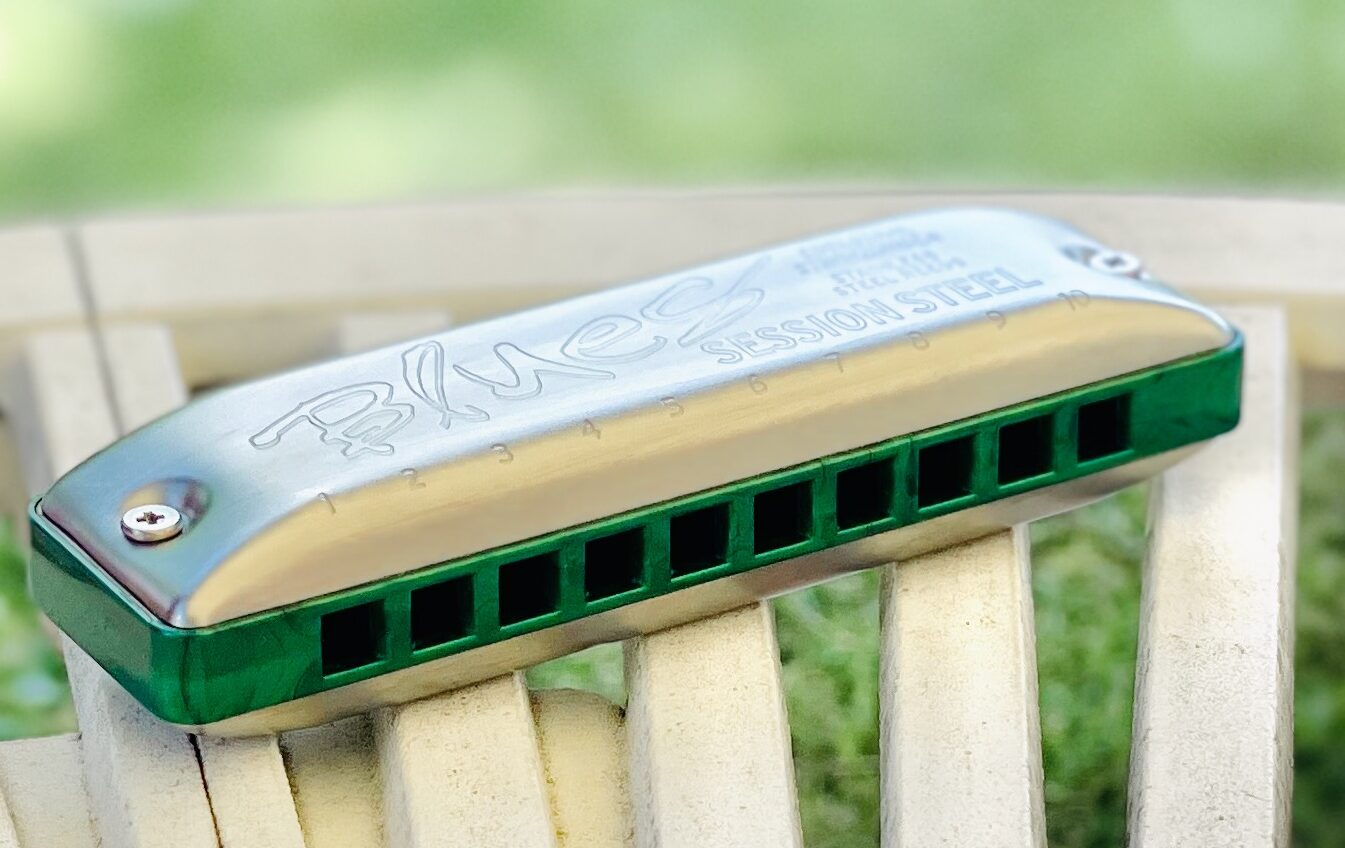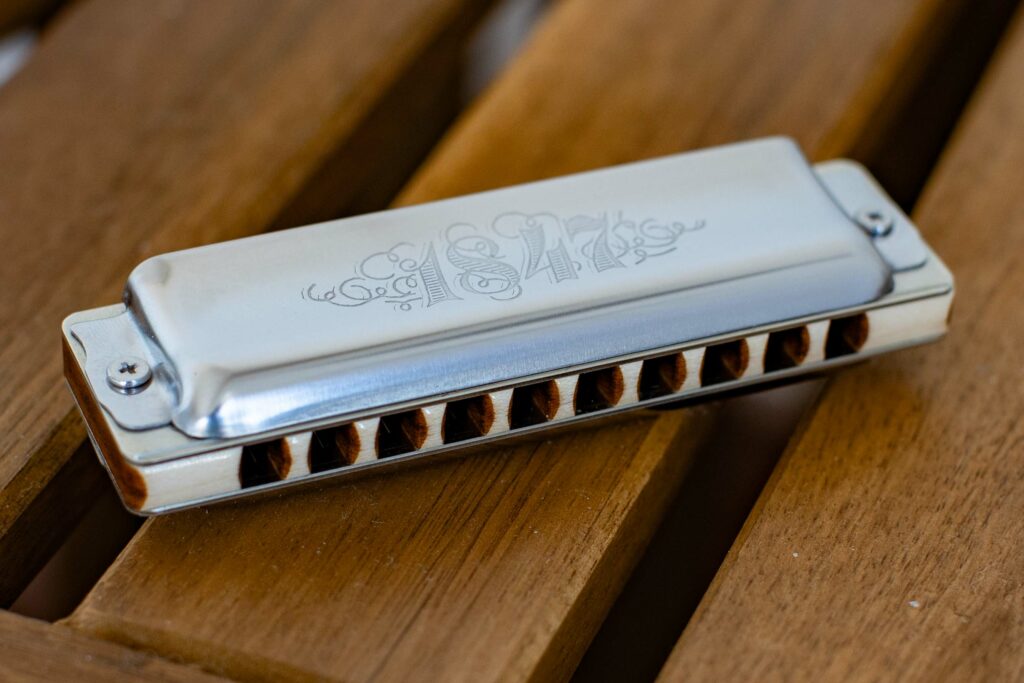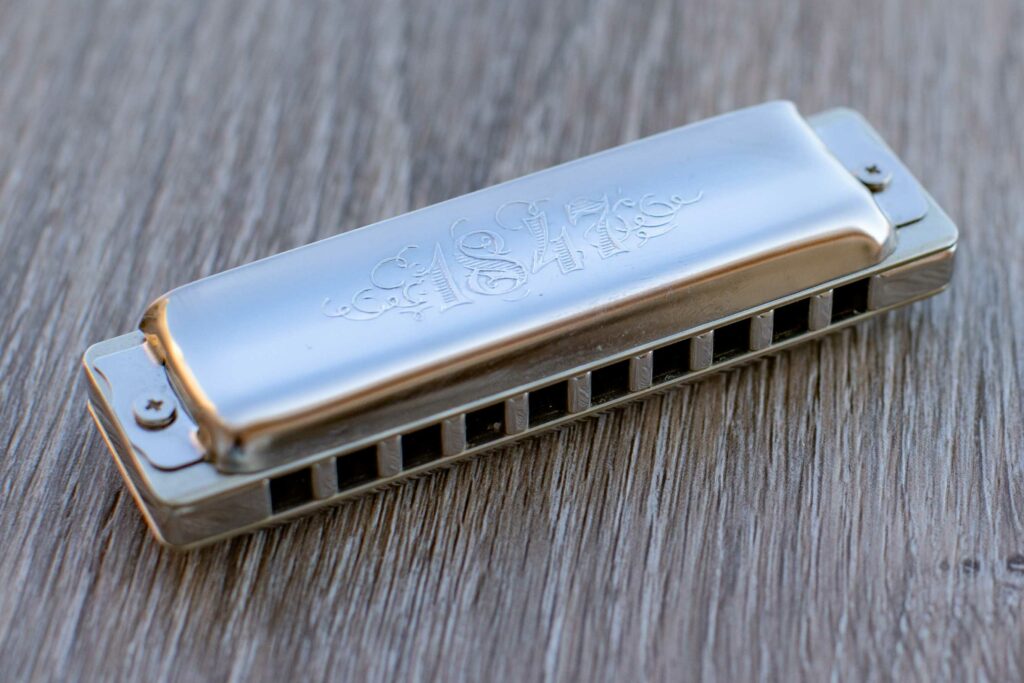Session Steel (49.95€)

We really like the look of this harmonica: the matted metal covers and the green comb are really pleasing. A matter of taste for sure.
The embouchure is a bit “big”. We prefer smaller embouchures, but it is also a matter of taste.
Out of the box:
- Quite playable for bends.
- 1°, 4° can be obtained, 5° and 6° can be obtained by forcing.
Gapping: it took us a bit more time to gap this harp. The stainless steel reeds take more pressure and repetitions to change the gap and we’ve had to do more trials and errors to obtain the playability we wanted (that is, without squealing at all when playing 4°, 5° and 6° at low volume). We’ve also had at first some difficulties mounting the cover correctly, some air leaking was occurring. But it was finally solved by taking care of aligning the covers well on the mouthpiece.
Once setup, the playability is not very good (without being too bad), the sound is a bit dull, easy to shape with the hands. It has less “projection” than the Lightning. The overblows sound pleasing and match well with the sound of the “natural” reeds, making playing a melody sound well.
To summarize, the Session Steel took us a bit more time to setup, and is not as responsive as some other harmonicas, but there’s something in it we like.
1847 Classic (79.95€)

The 1847 is Seydel modern version of the Blues Harp. It was launched around 10 years ago and was the first harp with stainless steel reeds. It is known for lasting longer than standard reeds, but we haven’t had the chance to verify that point as we haven’t broken a reed for decades.
The look is interesting: a mix of tradition (wood comb) and modernity.
The embouchure is a bit big for our taste but nothing problematic.
Out of the box, the 1° and 4° are playable. The setup was a bit easier to do than for the Session Steel. While the stainless steel reeds also take more pressure and repetition to change the gap (as for the Session Steel), the fine setup was easier to obtain. Could be a difference is global airtightness. Not sure.
Once gapped, the playability is better and the sound brighter than the session steel. The overblows sound pleasing and match well with the sound of the “natural” reeds. Overall, this harp is good but we would say the playability/price ratio is not excellent.
But the 1847 exists in several versions: with a solid polymer comb (1847 Silver), aluminium, anodized in black (1847 Noble) and polished stainless steel comb (1847 Lighnting, see below)
1847 Lightning (119.95€)

We used to think factory high end harmonicas from big companies were not worth the additional cost. We must say we’ve been very surprised by the 1847 Lightning.
The instrument is very heavy in the hand. The comb is made of metal.
Out of the box, the harmonica is very airtight, with a very good sound projection. The sound is bright and powerful. All the overblows and the 7° were obtainable out of the box.
After a quick gapping and some nail polish, the Lightning is fully playable chromatically. Very good response, the overblows and overdraws are very easy to obtain.
Definitely a very good surprise. This harmonica clearly is worth its price. This is the harmonica from the Seydel line that we would recommend for chromatic playing.
Sound comparison
Here is a sound sample, which goal is to compare the sounds of the New Golden Melody, the Session Steel and the 1847 Lightning.
We’ve chosen 3 phrases highlighting challenges on the diatonic:
- The first one has a 5° as the first and important note
- The second one has a lot of 3’ and 3” in the melody
- The third one has a 4° and a 5° after having played the +4, which makes the 4° more difficult to obtain.
To our ears, the Lightning as a richer sound and should be easier to shape (thanks to EQ for example). When playing acoustically, the Lightning is very powerful and projects a lot of sound.
We do like the Seydel Session Steel with its quieter sound for practicing but the Lightning definitely is the best candidate for a real performance.
Laurent Vigouroux